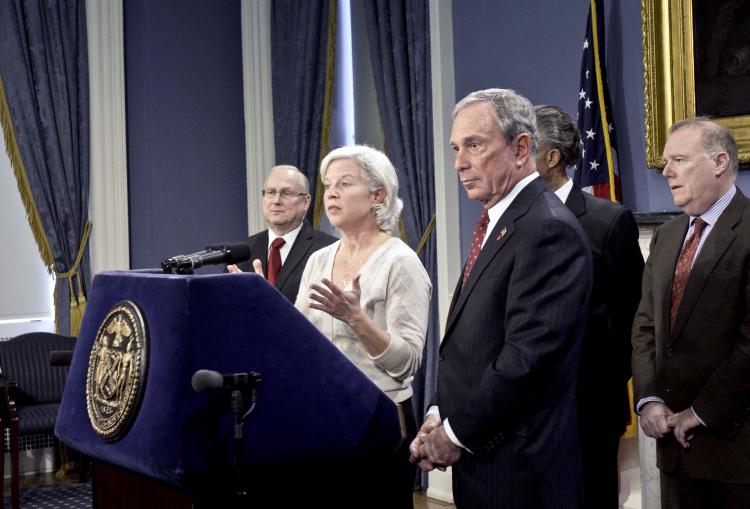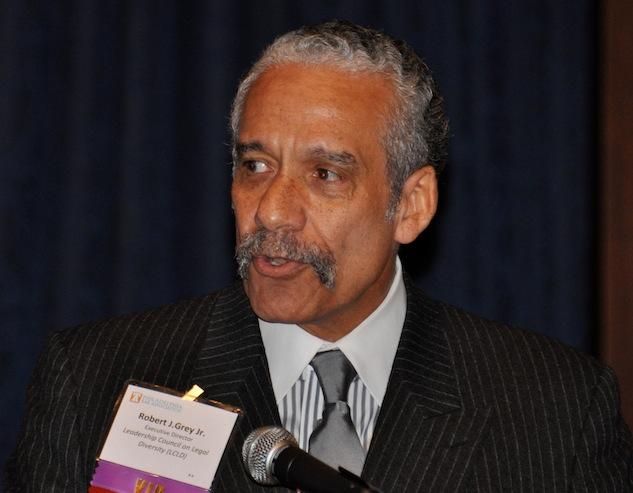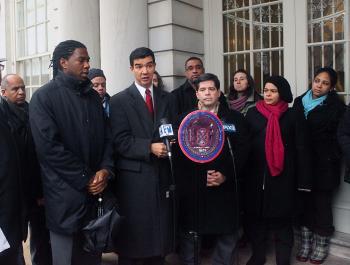NEW YORK—With a recidivism rate for boys of 81 percent, the highest in the country, Mayor Michael Bloomberg called the juvenile justice institutions “relics” this week and called for an overhaul of the system, which is costing city taxpayers approximately $62 million a year.
The mayor said that sending young offenders hundreds of miles away from their families is not working. He compared the system to a turnstile, which is both costly and doesn’t aid in keeping the public safe.
“The current system is not helping our kids, it isn’t helping taxpayers and is not helping public safety,” said the mayor.
Bloomberg has proposed a new plan that includes allocating more resources to local juvenile centers, which would allow kids to stay close to their families in order to help them reintegrate into the community once they exit the system.
The current institutions are costing approximately $270,000 per child per year, said the mayor, whereas community-based programs cost significantly less, approximately $17,000 per child per year.
He also highlighted that many of the community based programs have shown strong rates of success.
Although the number of kids in state institutions has decreased by two thirds, those facilities remain fully staffed while being half-empty.
Deputy Mayor of Health and Human Services Linda Gibbs joined Bloomberg to a visit to Finger Lakes Residential Center on Tuesday. There were about 148 staff members for approximately 40 kids, she noted.
“We’re getting fiscally clobbered in the process. In a time when we have to lay off teachers and public services, we’re paying the state for unused beds and idle staff,” Bloomberg said.
The mayor is asking the governor to enact legislation to allow empty centers upstate to close faster, while transferring more resources toward New York City facilities across the five boroughs.
Apart from the high recidivism rate and the cost to the taxpayers, Bloomberg cited low quality of education within the current system as another major concern. According to the mayor, none of the upstate juvenile centers have accredited schools. He described their school facilities as little more than “rubber rooms.”
“If you don’t have an education, you can’t get a job. If you don’t have a job, you can’t have the dignity to be self sufficient; you can’t feed yourself, you get hungry, and you get back into a life that spirals down,” noted Bloomberg.
The mayor also said that upstate facilities have a history of “failing to protect the security of the juveniles in their care.”
In August 2009, the U.S. Department of Justice (DOJ) submitted a report to Gov. David Paterson, documenting findings from a series of 2008 investigations into four juvenile justice facilities, including the Lansing Residential Center, the Louis Gossett Jr. Residential Center, the Tryon Residential Center, and the Tryon Girls Center.
The DOJ found that staff was quick to resort to a high degree of force, which the agency called disproportionate to the level of infractions. They also concluded that the implemented restraining techniques resulted in a large number of injuries to the youth.
“I have had a long-time concern about allegations of abuse in state facilities that could be monitored more easily if juveniles were closer to their families,” said Rev. Al Sharpton.
Sharpton stated in a press release that the ultimate goal should be to bring the kids back into a family and community environment rather than isolate them. Sending children more than five hours away to upstate facilities makes it very difficult for the families of the youth to reach out and bond with them, in order to help them in the reform process, he noted.
The mayor said that sending young offenders hundreds of miles away from their families is not working. He compared the system to a turnstile, which is both costly and doesn’t aid in keeping the public safe.
“The current system is not helping our kids, it isn’t helping taxpayers and is not helping public safety,” said the mayor.
Bloomberg has proposed a new plan that includes allocating more resources to local juvenile centers, which would allow kids to stay close to their families in order to help them reintegrate into the community once they exit the system.
The current institutions are costing approximately $270,000 per child per year, said the mayor, whereas community-based programs cost significantly less, approximately $17,000 per child per year.
He also highlighted that many of the community based programs have shown strong rates of success.
Although the number of kids in state institutions has decreased by two thirds, those facilities remain fully staffed while being half-empty.
Deputy Mayor of Health and Human Services Linda Gibbs joined Bloomberg to a visit to Finger Lakes Residential Center on Tuesday. There were about 148 staff members for approximately 40 kids, she noted.
“We’re getting fiscally clobbered in the process. In a time when we have to lay off teachers and public services, we’re paying the state for unused beds and idle staff,” Bloomberg said.
The mayor is asking the governor to enact legislation to allow empty centers upstate to close faster, while transferring more resources toward New York City facilities across the five boroughs.
Apart from the high recidivism rate and the cost to the taxpayers, Bloomberg cited low quality of education within the current system as another major concern. According to the mayor, none of the upstate juvenile centers have accredited schools. He described their school facilities as little more than “rubber rooms.”
“If you don’t have an education, you can’t get a job. If you don’t have a job, you can’t have the dignity to be self sufficient; you can’t feed yourself, you get hungry, and you get back into a life that spirals down,” noted Bloomberg.
The mayor also said that upstate facilities have a history of “failing to protect the security of the juveniles in their care.”
In August 2009, the U.S. Department of Justice (DOJ) submitted a report to Gov. David Paterson, documenting findings from a series of 2008 investigations into four juvenile justice facilities, including the Lansing Residential Center, the Louis Gossett Jr. Residential Center, the Tryon Residential Center, and the Tryon Girls Center.
The DOJ found that staff was quick to resort to a high degree of force, which the agency called disproportionate to the level of infractions. They also concluded that the implemented restraining techniques resulted in a large number of injuries to the youth.
“I have had a long-time concern about allegations of abuse in state facilities that could be monitored more easily if juveniles were closer to their families,” said Rev. Al Sharpton.
Sharpton stated in a press release that the ultimate goal should be to bring the kids back into a family and community environment rather than isolate them. Sending children more than five hours away to upstate facilities makes it very difficult for the families of the youth to reach out and bond with them, in order to help them in the reform process, he noted.






